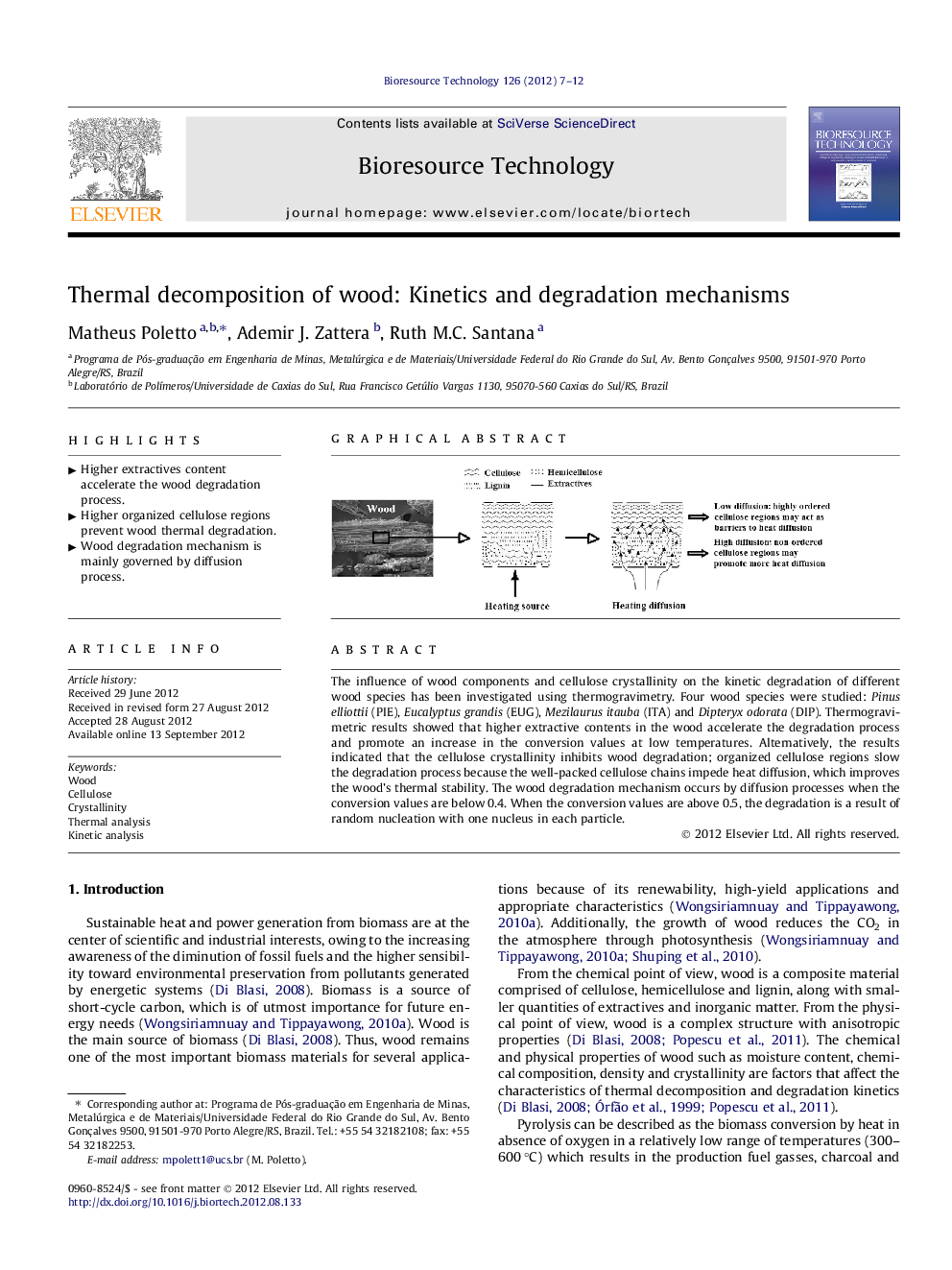| Article ID | Journal | Published Year | Pages | File Type |
|---|---|---|---|---|
| 681279 | Bioresource Technology | 2012 | 6 Pages |
The influence of wood components and cellulose crystallinity on the kinetic degradation of different wood species has been investigated using thermogravimetry. Four wood species were studied: Pinus elliottii (PIE), Eucalyptus grandis (EUG), Mezilaurus itauba (ITA) and Dipteryx odorata (DIP). Thermogravimetric results showed that higher extractive contents in the wood accelerate the degradation process and promote an increase in the conversion values at low temperatures. Alternatively, the results indicated that the cellulose crystallinity inhibits wood degradation; organized cellulose regions slow the degradation process because the well-packed cellulose chains impede heat diffusion, which improves the wood’s thermal stability. The wood degradation mechanism occurs by diffusion processes when the conversion values are below 0.4. When the conversion values are above 0.5, the degradation is a result of random nucleation with one nucleus in each particle.
Graphical abstractFigure optionsDownload full-size imageDownload as PowerPoint slideHighlights► Higher extractives content accelerate the wood degradation process. ► Higher organized cellulose regions prevent wood thermal degradation. ► Wood degradation mechanism is mainly governed by diffusion process.
